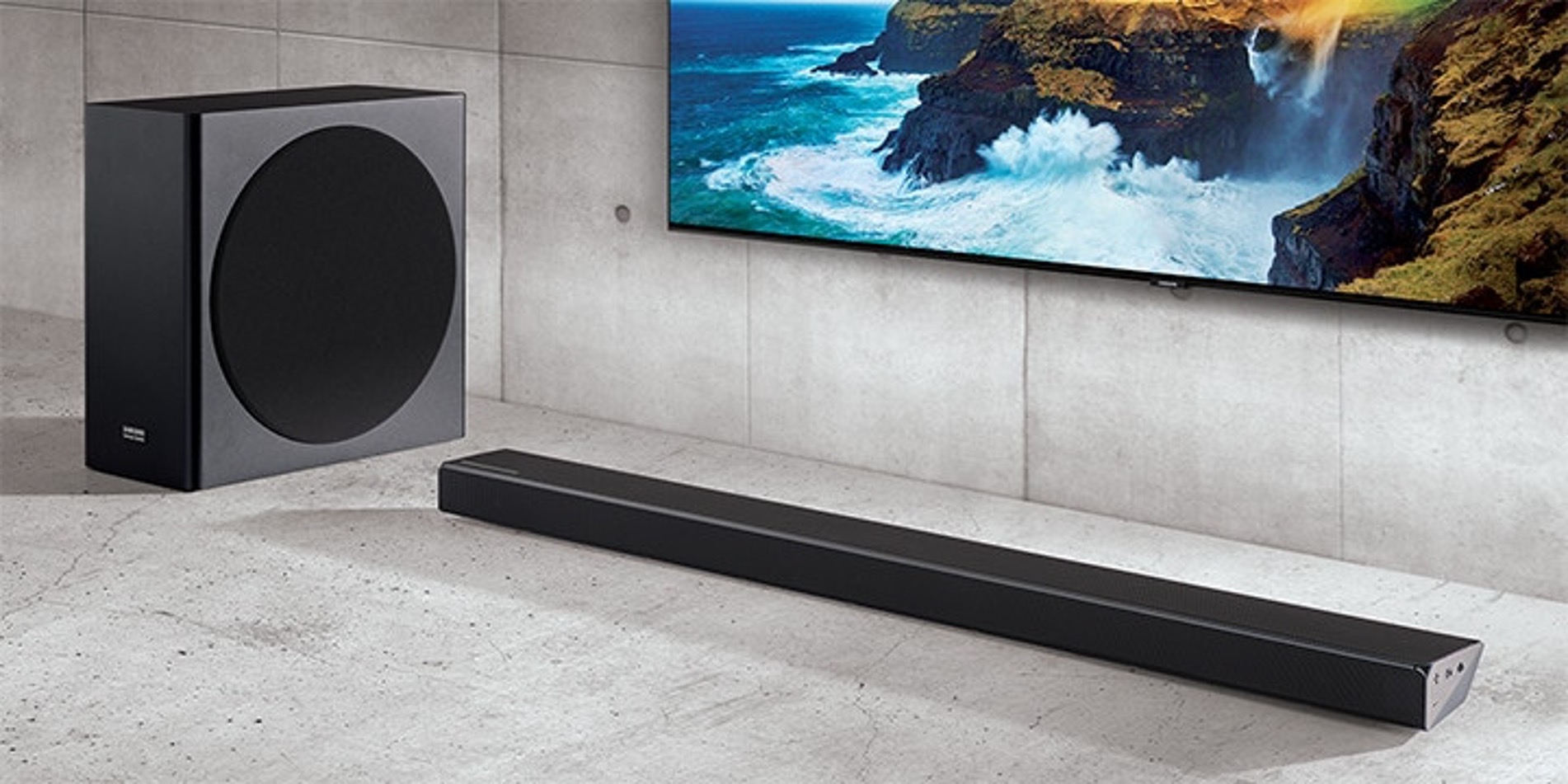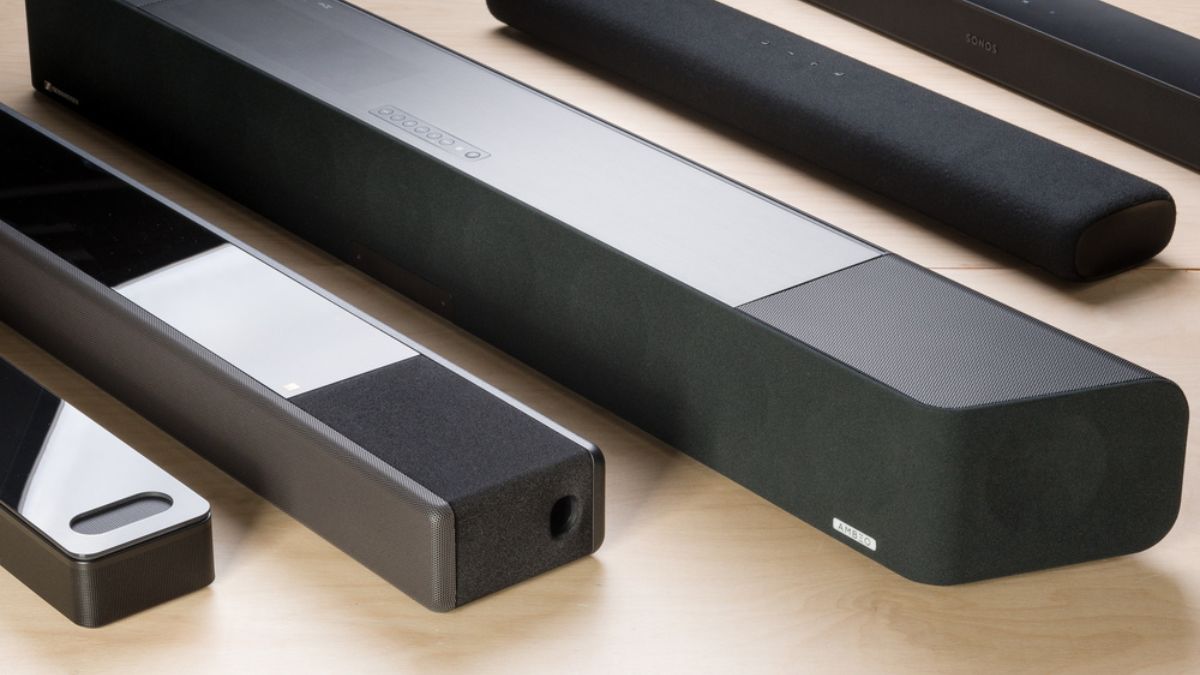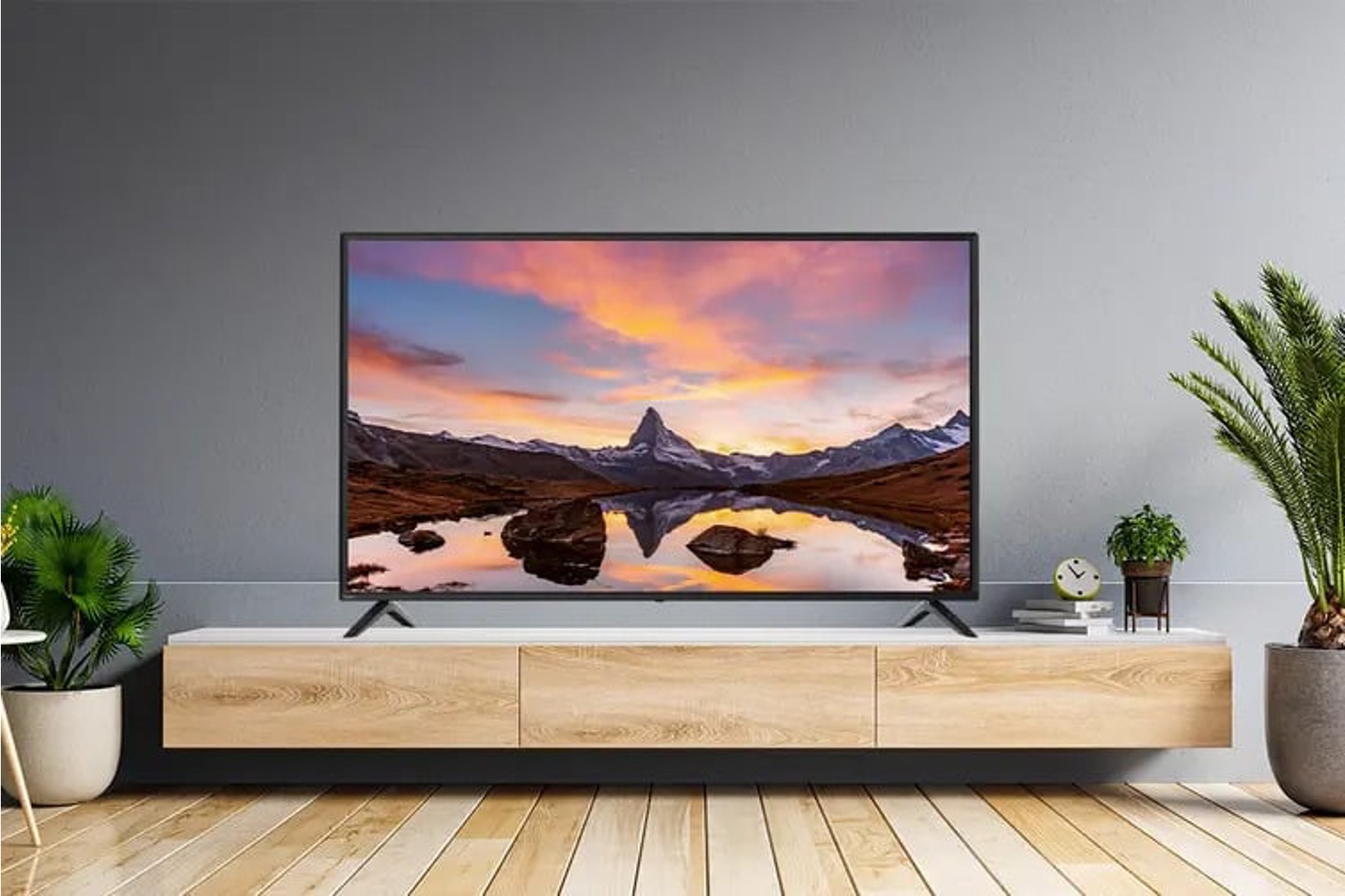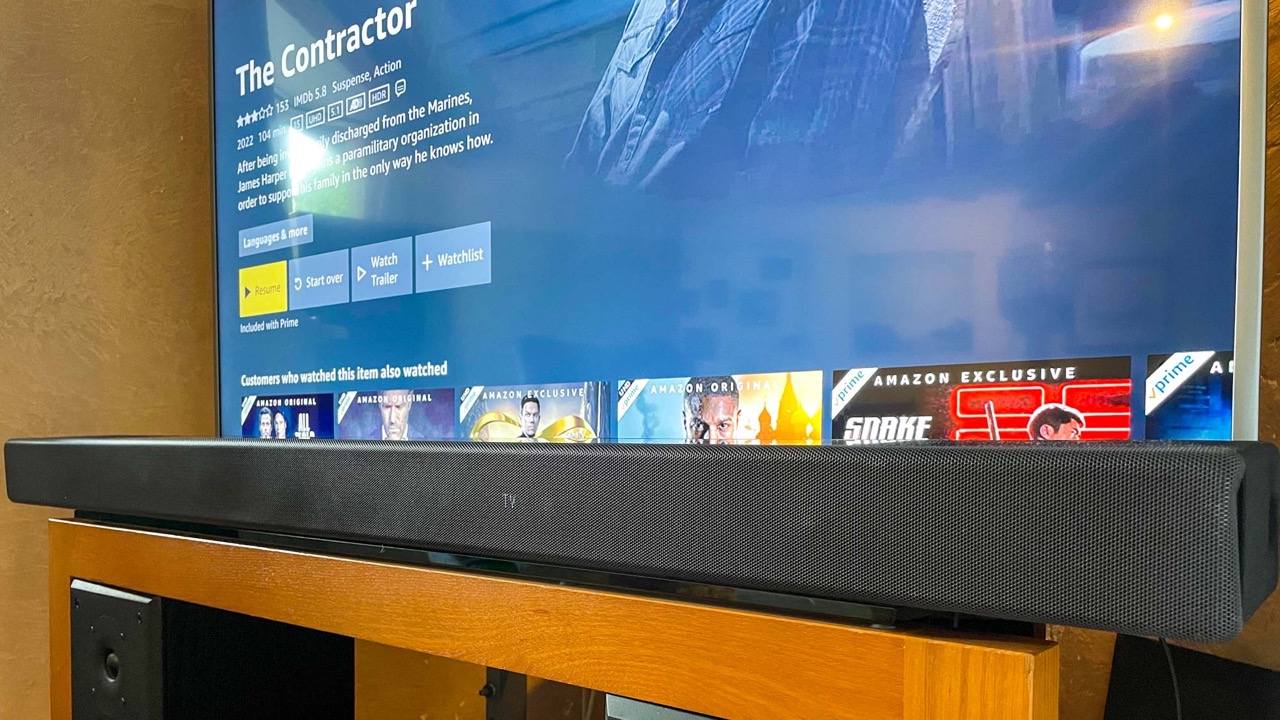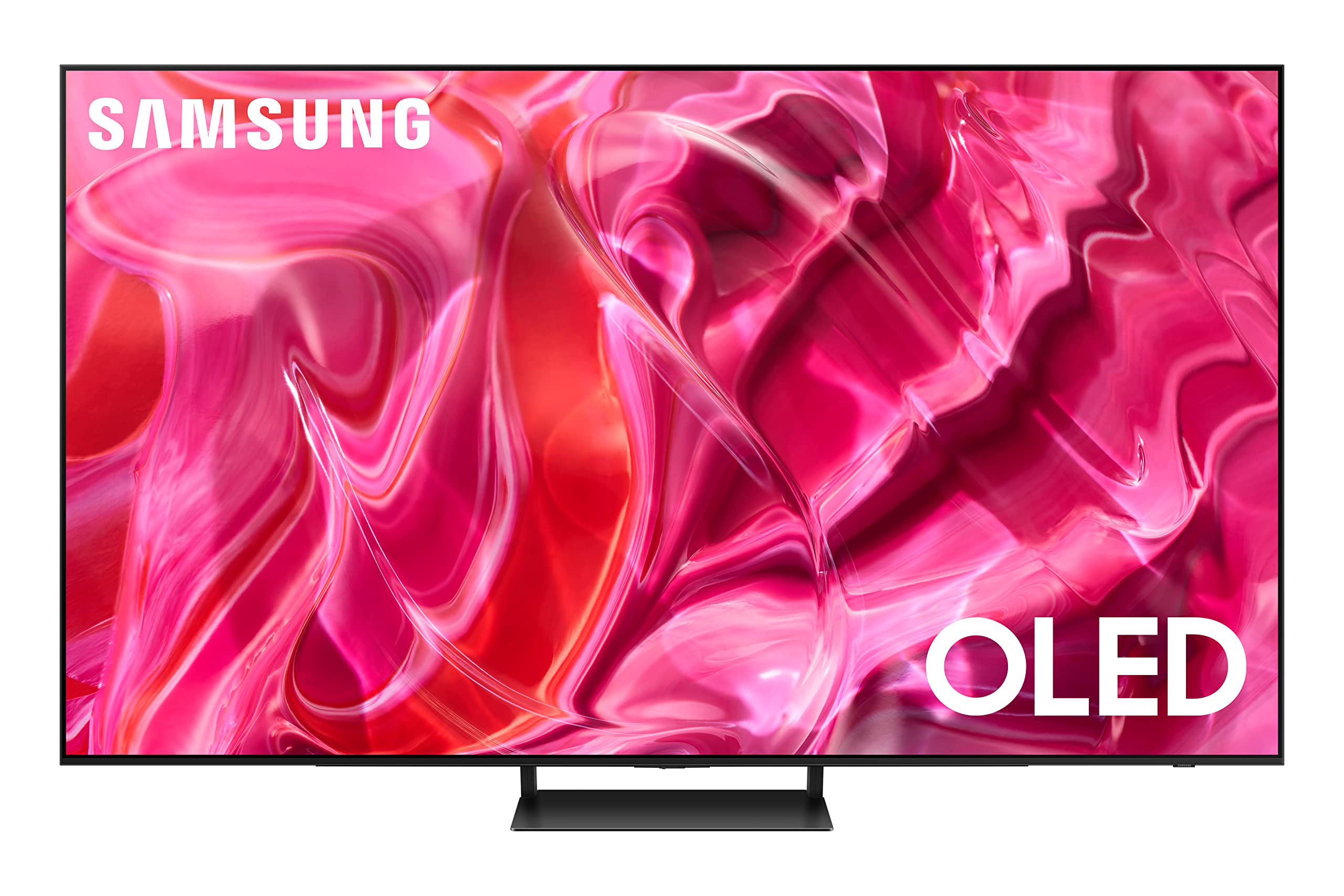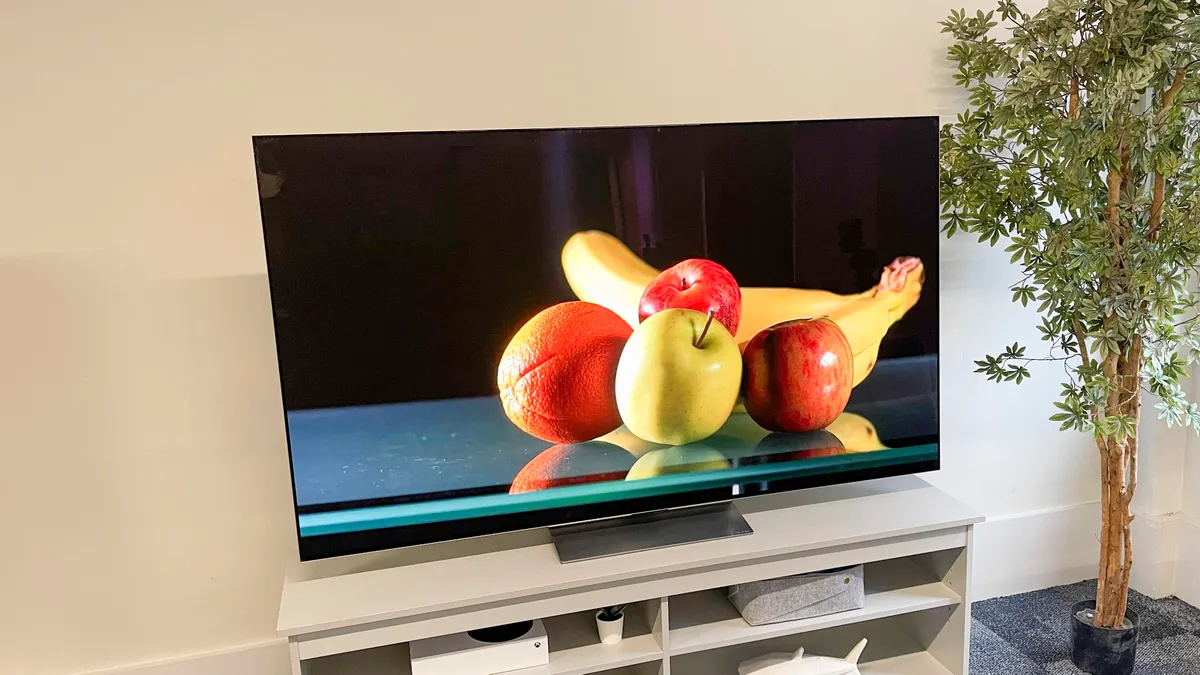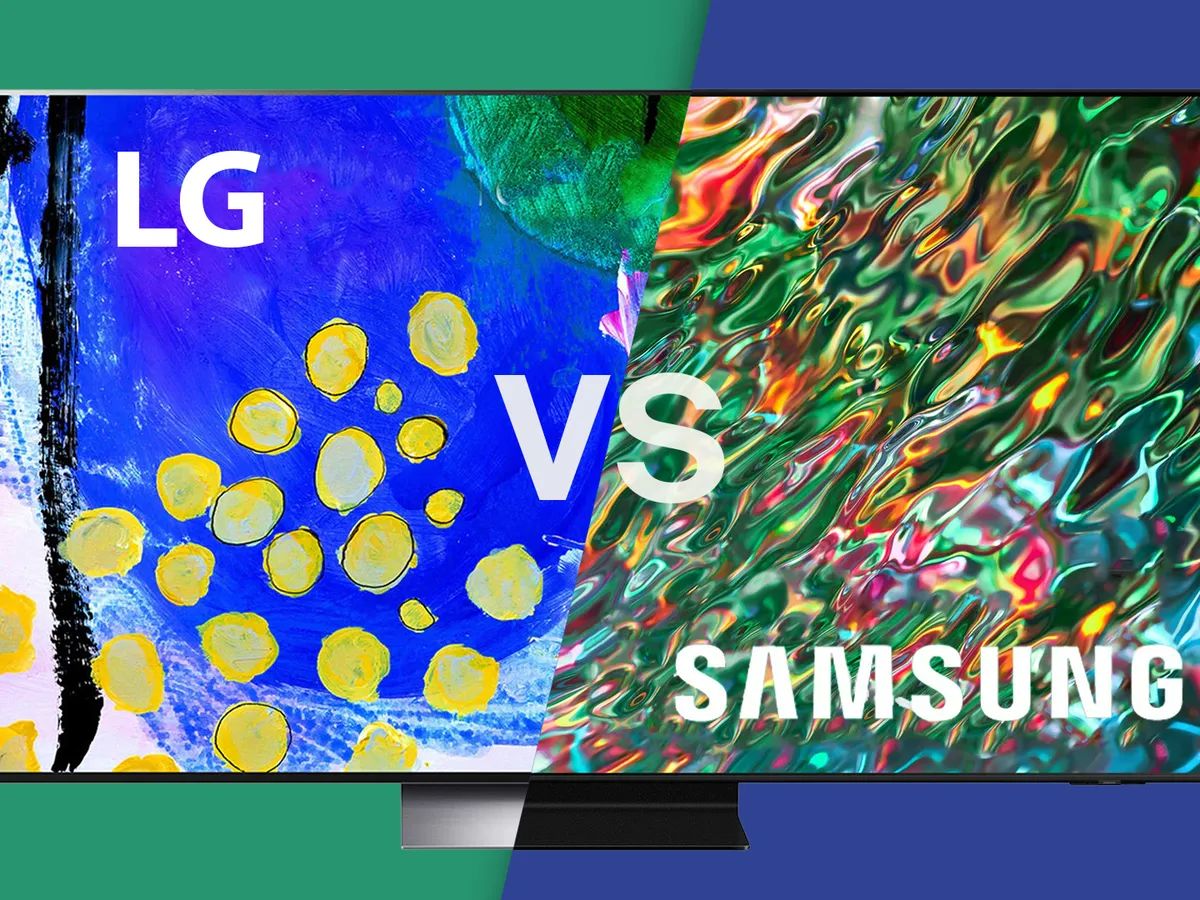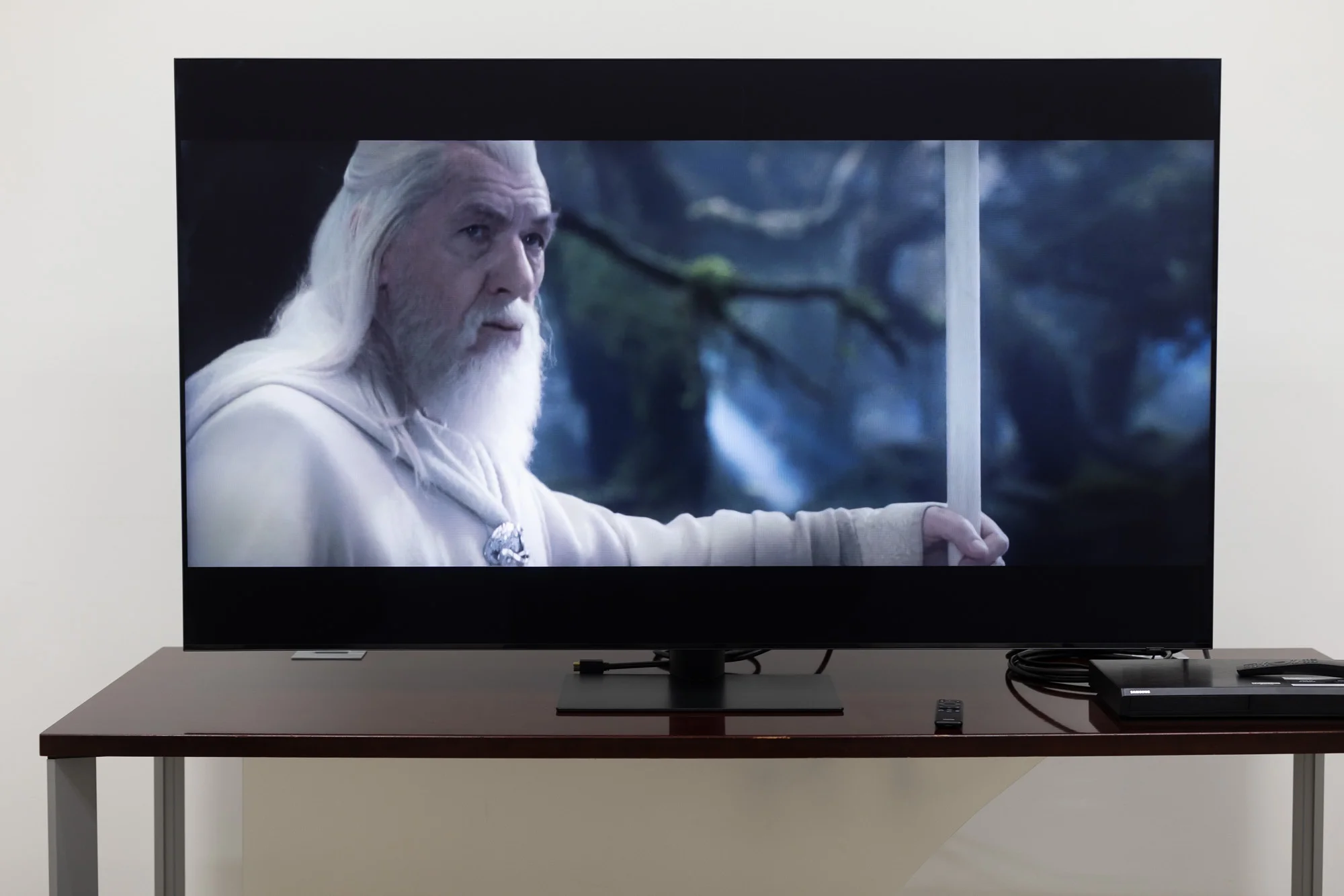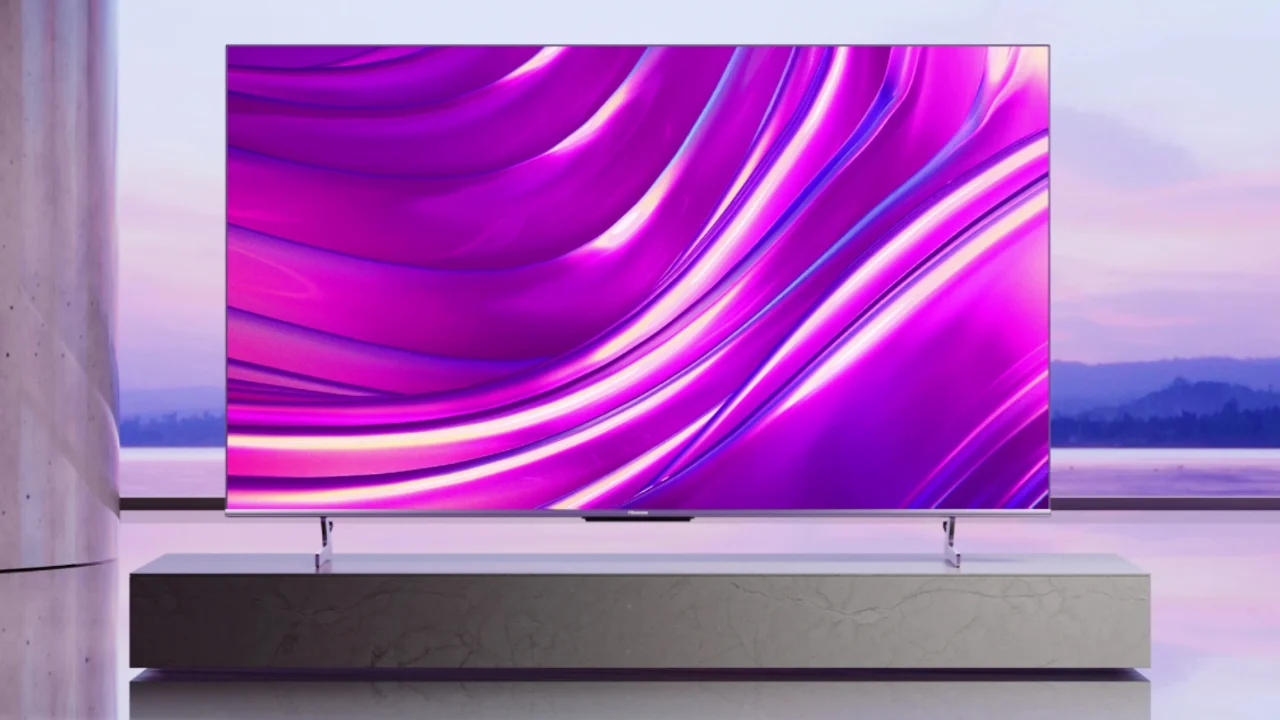Introduction
Welcome to our guide on how to connect an LG TV to a Samsung Soundbar. If you have recently purchased a Samsung Soundbar and want to enjoy immersive audio while watching your favorite shows and movies, connecting it to your LG TV is a straightforward process that you can easily accomplish.
Television speakers often lack the depth and clarity that a dedicated sound system can provide. With a soundbar, you can enhance your TV viewing experience by enjoying rich and powerful audio that complements the visuals.
Before we proceed with the steps, it’s important to note that while we are specifically discussing the process of connecting an LG TV to a Samsung Soundbar, the general principles and cables used are applicable to other TV and soundbar brands as well. So, even if you have different brands, you can still follow along and adapt the steps accordingly.
In the following sections, we will guide you through the necessary steps to connect your LG TV to a Samsung Soundbar, starting with checking compatibility and gathering the necessary cables. We’ll then walk you through the connection process, adjusting the settings, and finally testing the connection to ensure everything is working seamlessly.
By the end of this guide, you’ll be able to enjoy enhanced audio quality for your TV viewing pleasure!
Step 1: Check Compatibility
Before connecting your LG TV to a Samsung Soundbar, it’s crucial to ensure that both devices are compatible with each other. This step is important to avoid any potential compatibility issues or connectivity problems.
First, check the model numbers of both your LG TV and Samsung Soundbar. Refer to the user manuals or product documentation to confirm their compatibility. Ideally, you should have a TV and soundbar from the same generation or similar technology, as this will ensure seamless integration and optimal performance.
If you are unsure about the compatibility, you can visit the official websites of both LG and Samsung and look for compatibility information regarding their TV and soundbar models. These websites often provide detailed information on compatible devices and any specific requirements for connectivity.
Additionally, you can also consult online forums and tech communities where users discuss their experiences connecting different TV and soundbar combinations. By seeking advice from others who have already gone through the process, you can gain valuable insights and tips for a successful connection.
Keep in mind that compatibility also extends to the audio formats supported by your devices. Ensure that your LG TV and Samsung Soundbar support the same audio codecs, such as Dolby Digital, DTS, or HDMI ARC (Audio Return Channel).
Checking compatibility at the beginning will save you time and frustration down the line, ensuring a smooth connection process and optimal audio performance.
Step 2: Gather the necessary cables
Now that you have confirmed the compatibility between your LG TV and Samsung Soundbar, it’s time to gather the necessary cables for the connection. Having the right cables will ensure a proper and stable connection between the two devices.
The most common cable used to connect a TV to a soundbar is an HDMI cable. Check if your LG TV and Samsung Soundbar both have HDMI ports available. If so, you will need an HDMI cable that supports the required version (usually HDMI 1.4 or higher) and has the appropriate length to span the distance between the TV and the soundbar.
If your TV or soundbar lacks an HDMI port, you can explore alternative options such as optical audio cables or RCA cables. However, keep in mind that HDMI cables are generally preferred for their high-definition audio capabilities.
In addition to the audio cable, you may also need a power cable for your soundbar. Ensure that it is included in the package or check if you need to purchase it separately.
It’s always a good idea to have extra cables on hand in case of any unexpected issues or if you decide to rearrange your setup later. Consider investing in high-quality cables to ensure better durability and reliable performance.
Before moving on to the next step, double-check that you have all the required cables and that they are in good condition. If any cable appears to be damaged or worn out, it’s advisable to replace it to avoid any potential connectivity problems.
Once you have gathered the necessary cables, you are ready to move on to the next step: connecting the soundbar to your LG TV.
Step 3: Connect the Soundbar
Now that you have the required cables, it’s time to connect the Samsung Soundbar to your LG TV. Follow these simple steps:
- Locate the HDMI OUT or TV-ARC port on the back of your soundbar. This port is usually labeled and color-coded.
- Take one end of the HDMI cable and insert it into the HDMI OUT or TV-ARC port on the soundbar.
- Locate the HDMI IN or HDMI-ARC port on your LG TV. It is usually located on the back panel and may also be labeled or color-coded.
- Insert the other end of the HDMI cable into the HDMI IN or HDMI-ARC port on your LG TV.
- Make sure both ends of the HDMI cable are securely connected.
If you are using an optical audio cable or RCA cables, the connection process may vary slightly. Refer to the user manuals of your LG TV and Samsung Soundbar to determine the specific ports and steps for those cable types.
Once the soundbar is connected to your LG TV, you may need to enable the appropriate audio settings. On your LG TV, navigate to the settings menu and look for options related to audio output or sound settings. Select the output to the connected soundbar to ensure that the TV transfers audio to the soundbar instead of using its built-in speakers.
With the soundbar successfully connected, you are now ready to move on to the next step: connecting your TV to the soundbar.
Step 4: Connect the TV
Now that the Samsung Soundbar is connected to your LG TV, it’s time to establish the connection from the TV to the soundbar. Follow these steps:
- Locate the HDMI-ARC or HDMI-OUT port on your LG TV. This port is specially designed for connecting the TV to an external audio device.
- Take the other end of the HDMI cable connected to the soundbar and insert it into the HDMI-ARC or HDMI-OUT port on your LG TV.
- Ensure that the HDMI cable is securely plugged into both the soundbar and the TV.
If you are using optical audio cables or RCA cables, the connection process may differ. Consult the user manuals of your LG TV and Samsung Soundbar to identify the specific ports and steps for those cable types.
Once the TV is connected to the soundbar, power on both devices, and ensure that the soundbar is set to the correct input source. On the soundbar, use the remote control or the control panel to select the appropriate input source, such as HDMI-ARC.
Next, access the audio settings on your LG TV through the setup menu. Locate the audio output settings and select the option to output audio to an external speaker or audio device. Ensure that the correct audio output is selected to direct the sound to the connected soundbar instead of the TV’s built-in speakers.
With the TV successfully connected to the soundbar, you are ready to proceed to the next step: adjusting the settings for optimal audio experience.
Step 5: Adjust the settings
After connecting your LG TV to the Samsung Soundbar, it’s essential to adjust the settings to ensure the best audio experience. Here are the steps you need to follow:
- Using your LG TV’s remote control, navigate to the settings menu and locate the audio settings.
- Within the audio settings, look for options related to audio output or sound settings.
- Choose the appropriate audio output option that corresponds to the connected soundbar. This may be labeled as HDMI-ARC or the specific soundbar model.
- Explore additional audio settings such as equalizer options or sound modes to tailor the audio output to your preferences.
- Make adjustments to the volume levels to ensure that the soundbar produces an optimal audio balance in relation to the TV’s volume.
- Experiment with different settings and configurations to find the combination that offers the best sound quality and enhances your viewing experience.
It’s worth noting that the specific settings and options available may vary depending on your LG TV model and the soundbar you are using. Refer to the user manuals or documentation of both devices for more detailed information on adjusting the settings.
Take some time to familiarize yourself with the available settings and experiment with different configurations. This will allow you to personalize the audio output and optimize it according to your preferences and the content you are watching.
Once you have adjusted the settings to your liking, you are now ready to move on to the final step: testing the connection and enjoying the enhanced audio experience.
Step 6: Test the connection
Now that you have connected your LG TV to the Samsung Soundbar and adjusted the settings, it’s time to test the connection and ensure everything is working properly. Follow these steps for a successful test:
- Play a piece of audio or video content on your LG TV.
- Listen for the sound coming from the Samsung Soundbar instead of the TV’s built-in speakers.
- Ensure that the audio is clear, balanced, and synchronized with the visuals on the TV.
- Adjust the volume levels on both the TV and soundbar to find the desired audio balance.
- Test different content types, including movies, TV shows, and music, to evaluate the overall audio performance.
- Pay attention to any potential audio delays or syncing issues between the TV and soundbar. If you notice any issues, consult the user manuals or online resources for troubleshooting steps.
If the test is successful, congratulations! Your LG TV is now successfully connected to the Samsung Soundbar, and you can enjoy a more immersive and enhanced audio experience with your favorite content.
In the event that you encounter any issues during the test, such as no audio, audio dropouts, or other connectivity problems, revisit the previous steps to ensure that all connections are secure and the settings are properly configured. Additionally, consult the user manuals of your LG TV and Samsung Soundbar or reach out to their respective customer support for further assistance.
Remember that technology can be complex, and sometimes troubleshooting is necessary. With patience and persistence, you will be able to troubleshoot and resolve any issues, ensuring a seamless audio experience.
Once you are satisfied with the outcome of the test, it’s time to sit back, relax, and enjoy your favorite movies, shows, and music with the enhanced audio quality provided by your LG TV and Samsung Soundbar!
Conclusion
Connecting an LG TV to a Samsung Soundbar can greatly enhance your television viewing experience by providing immersive and high-quality audio. By following the steps outlined in this guide, you can successfully connect the two devices and enjoy a seamless audio integration.
In the beginning, it’s crucial to check the compatibility of your LG TV and Samsung Soundbar to ensure a smooth connection process. Gather the necessary cables, such as HDMI, optical audio, or RCA cables, based on the available ports on your devices.
Once you have the cables, connect the soundbar to your LG TV, ensuring secure connections and selecting the appropriate audio output settings on both devices. Then, proceed to connect your LG TV to the soundbar, utilizing the HDMI-ARC or HDMI-OUT port for optimal audio transmission.
After the physical connections are established, adjust the audio settings on your LG TV to optimize the soundbar’s performance. Explore various equalizer options and sound modes to personalize the audio output according to your preferences.
Finally, test the connection by playing audio or video content and ensuring that the sound is coming from the Samsung Soundbar instead of the TV’s built-in speakers. Make any necessary adjustments to the volume levels and evaluate the overall audio performance for a satisfactory experience.
If any issues arise during the connection or testing process, consult the user manuals, online resources, or customer support for troubleshooting assistance. Sometimes, minor adjustments and troubleshooting steps can resolve connectivity or audio quality problems.
Once everything is working smoothly, you can sit back, relax, and enjoy your favorite movies, TV shows, and music with the enhanced audio provided by your LG TV and Samsung Soundbar.
Remember, while this guide specifically focuses on connecting an LG TV to a Samsung Soundbar, the general principles and steps can be applied to other TV and soundbar brands as well. Adapt the instructions accordingly to connect different combinations of devices.
With the right connections and settings, your LG TV and Samsung Soundbar can work together harmoniously to deliver immersive and captivating audio that complements the stunning visuals on your television screen.







